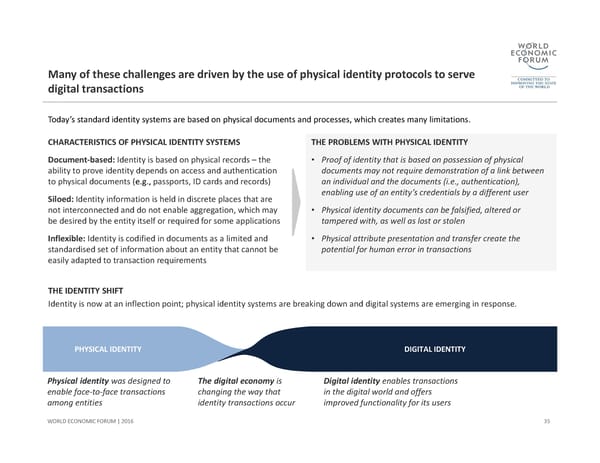Many of these challenges are driven by the use of physical identity protocols to serve digital transactionsCHARACTERISTICS OF PHYSICAL IDENTITY SYSTEMS Document‐based: Identity is based on physical records –the ability to prove identity depends on access and authentication to physical documents (e.g., passports, ID cards and records) Siloed: Identity information is held in discrete places that are not interconnected and do not enable aggregation, which may be desired by the entity itself or required for some applications Inflexible: Identity is codified in documents as a limited and standardised set of information about an entity that cannot be easily adapted to transaction requirements THE PROBLEMS WITH PHYSICAL IDENTITY •Proof of identity that is based on possession of physical documents may not require demonstration of a link between an individual and the documents (i.e., authentication), enabling use of an entity’s credentials by a different user •Physical identity documents can be falsified, altered or tampered with, as well as lost or stolen •Physical attribute presentation and transfer create the potential for human error in transactions 35 WORLD ECONOMIC FORUM | 2016 To d a y ’s standard identity systems are based on physical documents and processes, which creates many limitations. THE IDENTITY SHIFT Identity is now at an inflection point; physical identity systems are breaking down and digital systems are emerging in response. PHYSICAL IDENTITY DIGITAL IDENTITY Physical identity was designed to enable face‐to‐face transactions among entitiesDigital identity enables transactions in the digital world and offers improved functionality for its users The digital economy is changing the way that identity transactions occur
 A Blueprint for Digital Identity Page 35 Page 37
A Blueprint for Digital Identity Page 35 Page 37